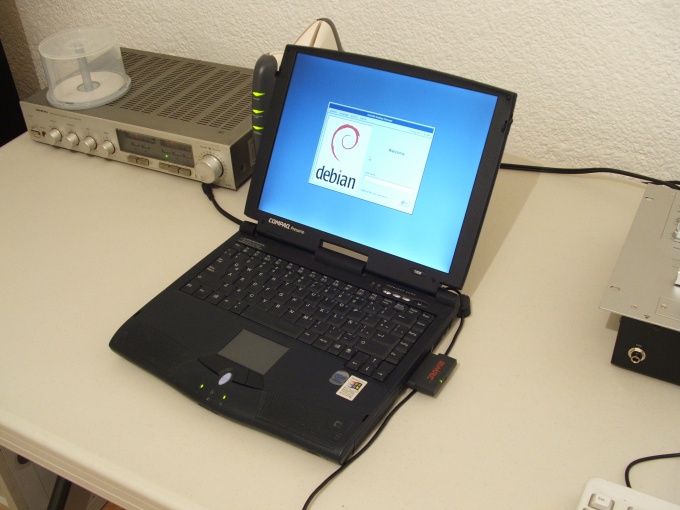Instruction
1
If you want to keep standing on my laptop OS Windows, under Linux it is necessary to allocate a separate disk partition with capacity from 20 gigabytes and more. If this section does not, create it using the appropriate software – such as Acronis Disk Director. Let's say you have a disk of 250 gigabytes. Divide it into disks (200 GB) and D (50 gigabytes). Then – attention!!! – remove the D drive, having Unallocated disk space. When installing on a clean disk, and you plan to work only with Linux, the above-described manipulations are not necessary to carry out.
2
Start the installation of Linux. To download with hard drive and DVD drive, you must startup press F12 – menu will appear select the device initial download. Maybe on your laptop the menu is invoked by pressing the other – carefully read the labels appearing at the start of the system.
3
If a menu has failed, the boot device selection have to be done through the BIOS. Usually the entrance is in the BIOS at startup by pressing Del or F2 can be used in other keys. Going into the BIOS, look for the tab BOOT and choose boot from CD. If this tab does not appear, search for the string "boot First", "Second boot" next to them must be line array the boot device. In the line "First boot, select boot from CD, then save the changes, click "Save and exit setup".
4
If done correctly, will start the Linux installation from the CD-ROM. During installation you will be asked to choose language, time zone, enter the username and password of the administrator. When prompted about where to install Linux, select automatically install in the Unallocated area. All required file system partitions will be created automatically. Subsequently, having gained experience, you will be able to specify partitions manually – this will allow you to configure the Linux most convenient way for you.
5
At the stage of selection of programs you will be offered a list of available to install apps. You can install them immediately or do it later. You should know that in Linux you can work in different graphical shells. Depends on the appearance of the desktop, Windows, etc. are the Most common two shell – KDE and Gnome. Each has its advantages and disadvantages, so install both. You can switch between them and choose the one that you like best.
6
At the final stage of installation you will be prompted to choose a login and password of the user to determine the boot loader, usually Grub. At the start of the system will appear to boot menu with two lines, Linux will boot by default) and the Other – that is a different operating system. You will be able to easily switch between Linux and Windows. If the installation is on a clean laptop, it will boot Linux.
7
After installation you will be prompted to restart the computer. Reboot, a menu will appear boot, a few seconds will start the download of Linux. Will appear the login window, it is necessary to enter login and password of a user (not administrator!). At this stage you can select the GUI. After it is loaded you will see the desktop of your chosen Linux distribution.
8
It should be noted that work in Linux are accustomed to the Windows user at first can produce a negative impression. All seem very strange and complex, in an UN-configured system may be a variety of "glitches". For example, you may not see the NTFS partitions (Windows file system), there may be problems with sound, graphics card, modem. Very unusual procedure to install software. But the more you work with Linux, the more he is going to like you, and one day the time will come when on Windows, you will switch only when necessary and with very great reluctance.
Useful advice
If you already run Windows, before installing Linux as second OS be sure to save all important files to external media!
